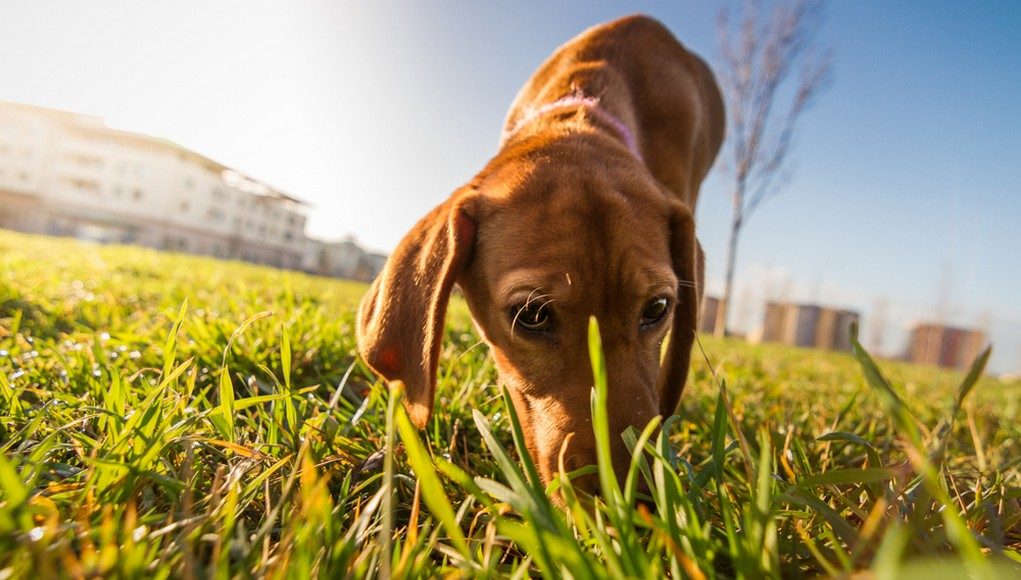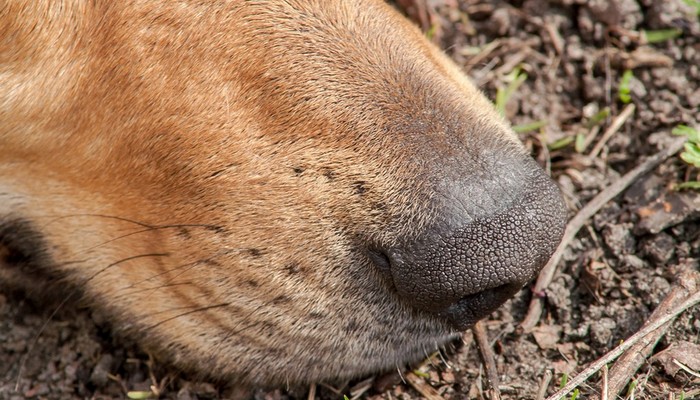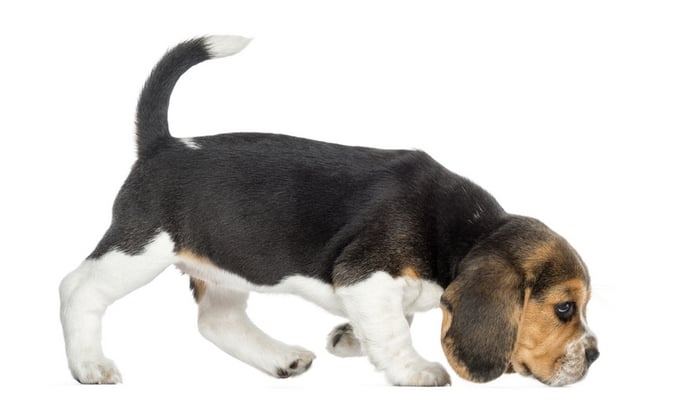Everyone knows that dogs have much sharper sense of smell than us humans, but did you know that it's good for them to exercise this sense? Many pet owners think that nose work is a skill that should only be taught to working and hunting dogs.
The truth is, your dog does nose work all the time, it just isn't structured. Nose work for dogs is an important tool that can help keep your pet active and give his brain some mental stimulation, which is essential for dogs.
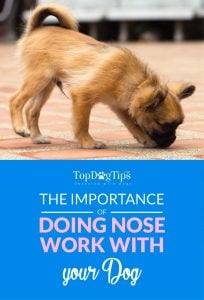 The canine nose is a very amazing thing. For example, did you know that dogs can:
The canine nose is a very amazing thing. For example, did you know that dogs can:
- Breathe in through the holes in the front of their nose and breathe out through the slits on the side?
- Wiggle both nostrils independently?
- Distinguish individual odors in scents?
To put it in perspective for you, humans have approximately 5 to 6 million olfactory receptors that are solely devoted to smell – impressive, but not really. Dogs have about 200 to 300 million!
Furthermore, dogs also have 4 times the brain power devoted to processing what they smell. A dog's nose is so powerful, it could detect one drop of blood in the amount of water that would fill two Olympic-sized swimming pools.
But how can we help our dog's fine tune this skill? Easy! Nose work for dogs is an exercise that combines your dog's strong power of scent with his desire to hunt. It is appropriate for all dogs; no matter their age, breed, size or health.
READ ALSO: How To Train A Dog To Do Nose Work And Why You Should
The Importance of Nose Work For Dogs
Getting Started with Dog Nose Work
It's not hard to get started teaching nose work for dogs. In fact, it's no harder than training your dog to perform any other task. With a bit of time, a lot of patience and the proper equipment, your dog will be performing nose work tasks with ease.
You'll need:
- A dog collar or traditional dog harness (not a no-pull harness like these ones)
- A standard leash, minimum 6 feet in length
- 6 sturdy cardboard boxes
- Your dog's favorite treat or toy
It is important that the dog you're working with be the only dog in the room. At least in the beginning, having as few distractions as possible will make training your pup much easier on both of you.
If you have a shy dog or a pooch that doesn't play well with others, this is a great alternative to other dog sports and activities. Training your dog all types of commands, the basic tricks and things like nose work makes benefit your canine all around.
RELATED: Importance of Socializing Puppies
Keep the structure
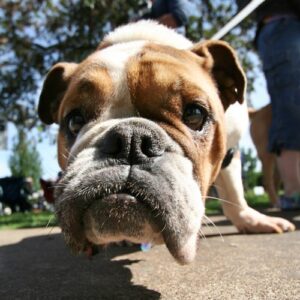 Nose work for dogs can be done with multiple dogs, but only after all dogs have plenty of experience and exceptional skills.
Nose work for dogs can be done with multiple dogs, but only after all dogs have plenty of experience and exceptional skills.
Usually, nose work for dogs is done with one handler and one canine. This not only fosters the bond between you and your companion, but it also allows your dog to be active and engaged without having to be around other pups.
To make it as easy as possible for your dog in the beginning, all your “hides” should be done inside in the same room.
It should be quiet and there should not be any distractions. You should also start by using foods with appealing smells. This will help Fido get the hang of things a little quicker.
It's easiest to start off with a helper.
Your helper can make a big deal of hiding the food inside the boxes. Place all three boxes on the ground and put food in 2 or 3 of them. Make sure that your dog watches where the food is placed. When your helper has placed all the treats, walk over to the boxes with your dog and encourage while he searches.
When he finds the treats, make a it very exciting. Praise him and tell him what a good job you did. Our dogs like to please us, and this will show your pooch that he is doing exactly what you want him to.
Just remember to do as little as possible while he's searching. Don't direct him, give him any hints or pull his leash in the direction that he needs to go. Your dog needs to figure this out on his own!
READ THIS: 10 Psychological Dog Training Tricks
Make Things Challenging for Dogs
When you first start out, you want to make the hides easy. This will allow your dog to grasp the concept of nose work quickly, and it will also build his confidence.
Think about it like this – if you were just starting to learn to throw a football, would you want to play with Tom Brady?
Allowing your dog the time to build his confidence will make the training process much smoother. Once your dog has the hang of things indoors with the boxes, try to expand your indoor search. Begin in the same room, but get rid of the boxes. Hide treats in areas where your dog can easily access them.
Then you can expand your search to other rooms of the house. Eventually, move up to multiple rooms. By this time, your dog should be a pro at searching for treats.
Now it's time to really step things up a notch.
Once your little genius has mastered the art of nose work for dogs inside the house, it's time to take things outside. This is obviously going to be much more challenging, as there are more distractions and many other smells to decipher.
It's best to start with the same type of food or treats that you used inside.
Using the same type of motivator will help your dog to understand that the objective is still the same. Once he has the hang of searching outside, it's time to move to a bigger challenge. Now you can try to hide a toy or favorite item and see if your dog can find it.
EXPERT INTERVIEW: Enriching Your Dog’s Life with Nose Work
Try Some Scent Games
Nose work for dogs is challenging, fun and exciting. I promise, you will enjoy it just as much as your dog. Once the two of you have the initial training done and your dog understands the objective of nose work, it's finally time to start playing some scent games.
You can find some great ideas for scent games on these sites:
Once you begin training your pet to do nose work, you'll be hooked. It's a lot of fun, and it really engages your dog. I know it's a favorite activity for all three of our girls, and I love it, too. It's great to see your dog really enjoying themselves while also stimulating their brain and getting them up off the couch.
Have you trained your dog to do nose work?
Have you tried nose work for dogs? Does your pet enjoy it? If you have any favorite scent games or any tips for nose work training, I'd love to read about them.
Your advice may help other pet owners who are interested in learning how to train their pet to do nose work, too. Leave me a comment below and tell us about your personal experience with nose work for dogs – let's talk.
READ NEXT: The Importance of Mental Stimulation for Your Dog


